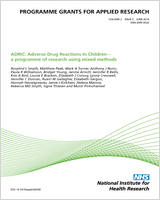From: Appendix 1, Systematic searches and summary of identified measures

NCBI Bookshelf. A service of the National Library of Medicine, National Institutes of Health.
Combined measures from reviews 1 and 2: patient management
Calls sent for telephone nurse advice that are returned for an ambulance response.
Accuracy of call-taker identification of different conditions (e.g. cardiac arrest, heart attack, stroke, serious illness, low-urgency calls suitable for nurse advice) or needs. Includes:
Accuracy of dispatch decisions – includes:
Accuracy of paramedic diagnosis:
Compliance with protocols and guidelines:
Proportion of people with respiratory distress (breathing difficulties) receiving mechanically assisted breathing.
Proportion of people with diabetes mellitus treated at home.
Proportion of elderly people attended within scope of advanced paramedic practice (e.g. treat and leave at home).
Proportion of people receiving spinal immobilisation (splints and collars) for back/neck injuries.
Re-contact with ambulance service within 24 hours (e.g. for calls closed with advice or patients not transported).
Hospital attendance or admission (e.g. within 24 hours, 7 days, 28 days).
Re-admission within 30 days for complications (e.g. pneumonia, wound infections).
Measuring patient safety:
Length of stay in hospital.
Duration of life support (intubation or ventilation) in hospital.
Discharge destinations:
Proportion of cases treated within time guidelines including:
FAST, Facial drooping, Arm weakness, Speech difficulties and Time to call emergency services; STEMI, ST-elevation myocardial infarction.
From: Appendix 1, Systematic searches and summary of identified measures

NCBI Bookshelf. A service of the National Library of Medicine, National Institutes of Health.